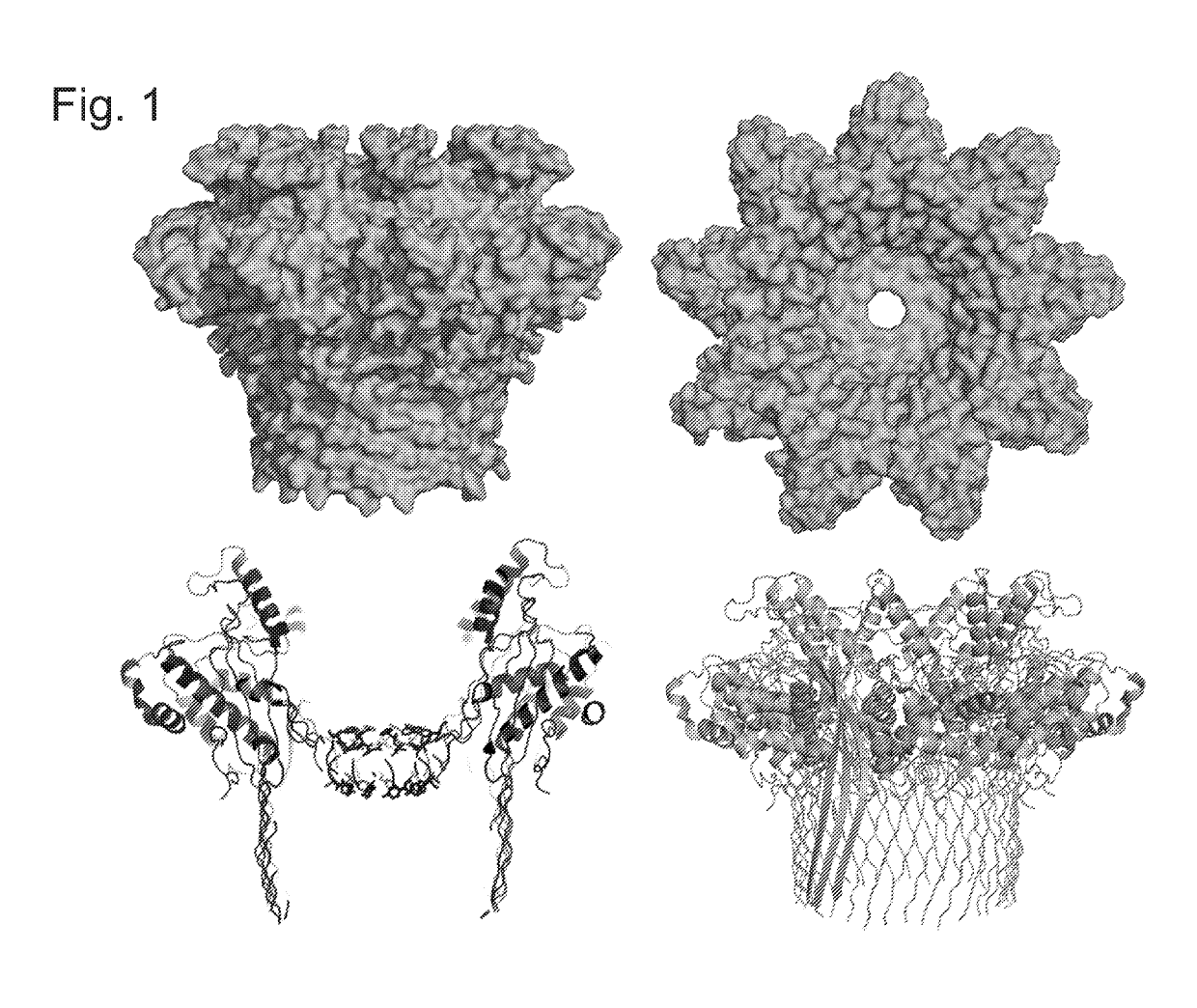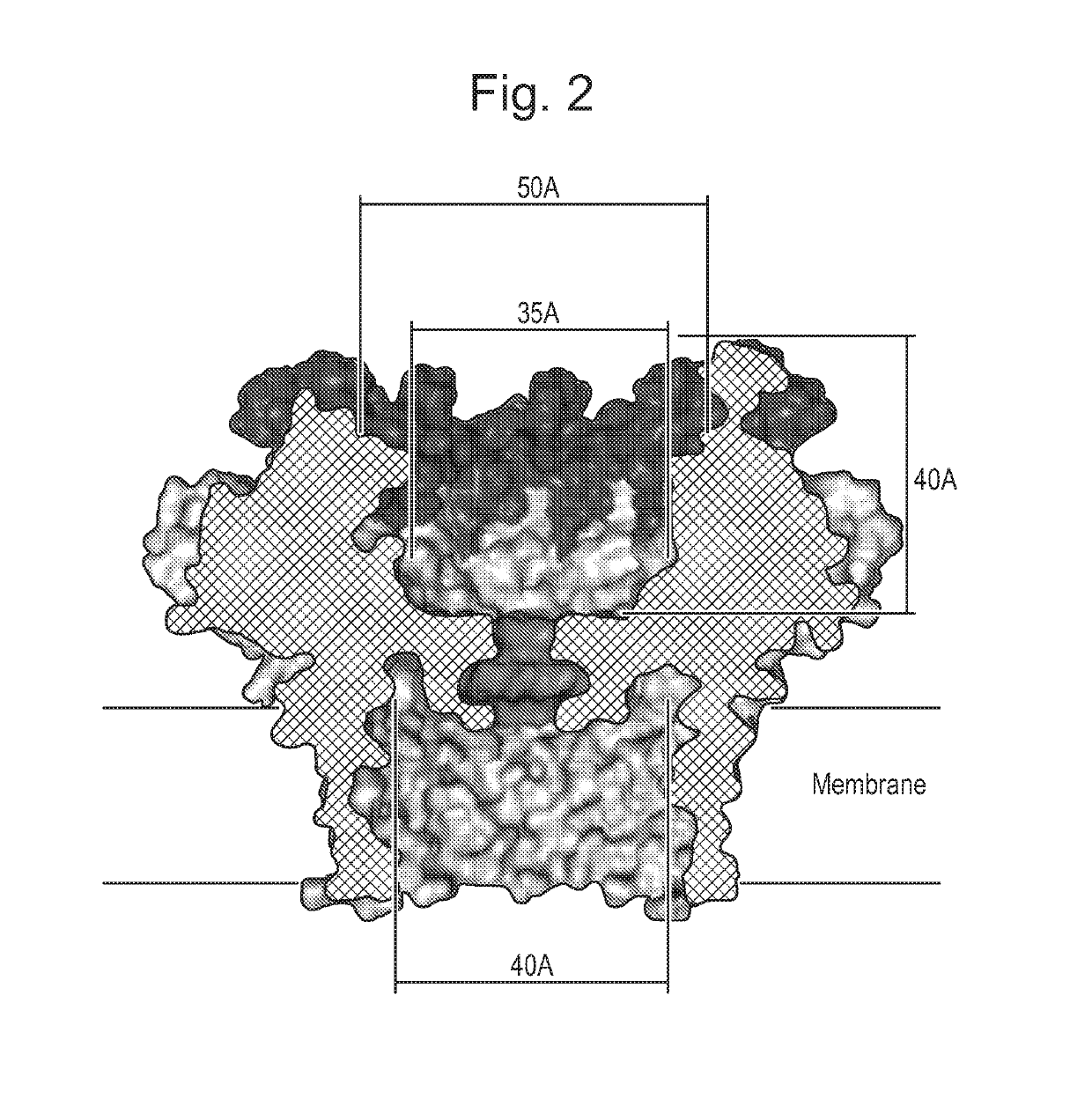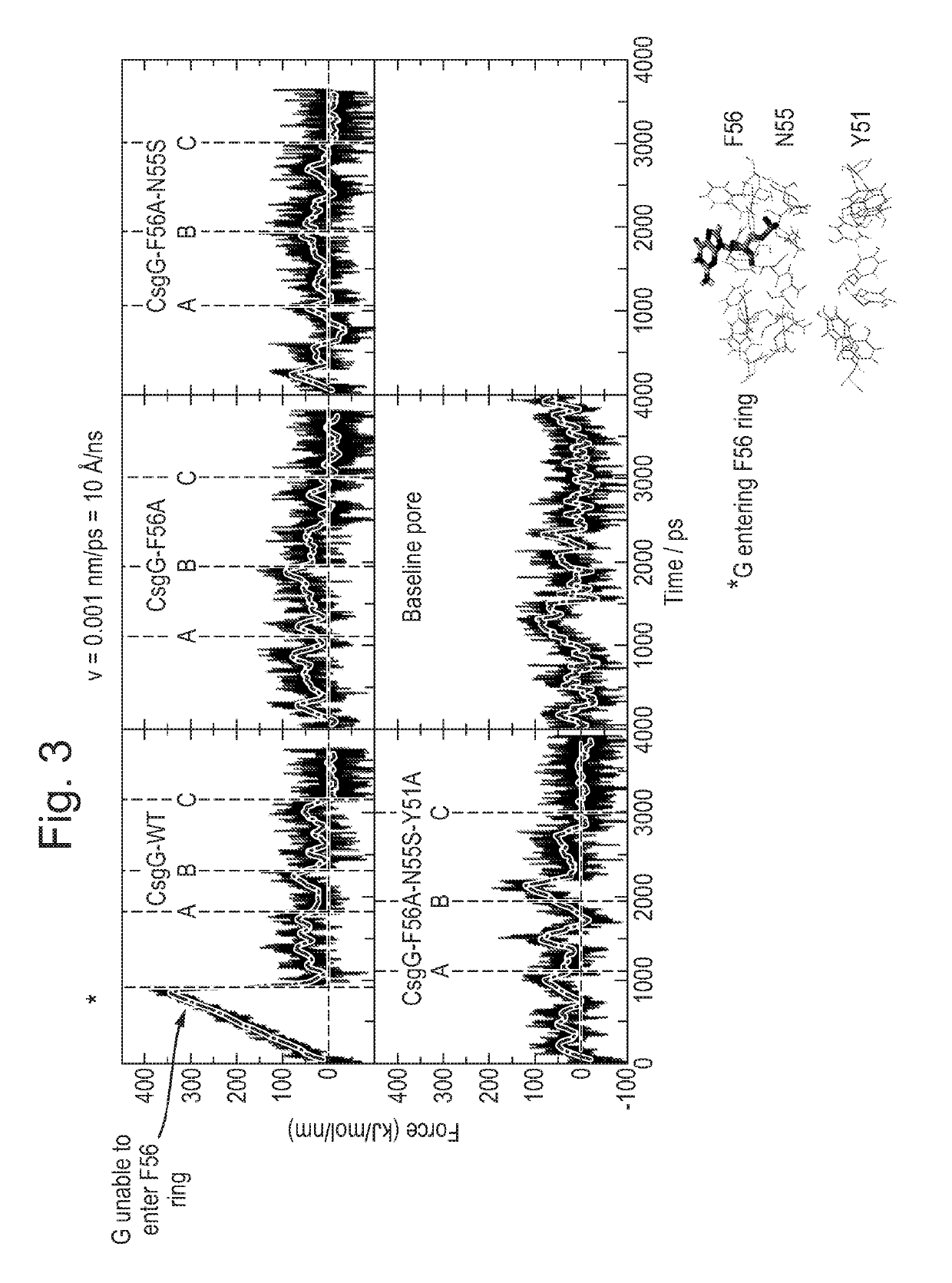Mutant pores
a technology of pores and pore pores, applied in the field of mutant pores, can solve the problems of difficult direct relationship between observed current and polynucleotide, high variance of current states, and slow and expensive existing technologies, so as to improve characterisation accuracy, increase current range, and improve the ability to estimate the characteristics of analytes
- Summary
- Abstract
- Description
- Claims
- Application Information
AI Technical Summary
Benefits of technology
Problems solved by technology
Method used
Image
Examples
example 1
[0713]This Example describes the simulations which were run to investigate DNA behaviour within CsgG.
Materials and Methods
[0714]Steered molecular dynamics simulations were performed to investigate the magnitude of the energetic barrier of CsgG-Eco and various mutants to DNA translocation. Simulations were performed using the GROMACS package version 4.0.5, with the GROMOS 53a6 forcefield and the SPC water model. The structure of CsgG-Eco (SEQ ID NO: 2) was taken from the protein data bank, accession code 4UV3. In order to make models of the CsgG-Eco mutants, the wild-type protein structure was mutated using PyMOL. The mutants studied were CsgG-Eco-(F56A) (SEQ ID NO: 2 with mutation F56A), CsgG-Eco-(F56A-N55S) (SEQ ID NO: 2 with mutations F56A / N55S) and CsgG-Eco-(F56A-N55S-Y51A) (SEQ ID NO: 2 with mutations F56A / N55S / Y51A).
[0715]DNA was then placed into the pores. Two different systems were set up:[0716]i. A single guanine nucleotide was placed into the pore, just above the constricti...
example 2
[0723]This Example describes the characterisation of several CsgG mutants.
Materials and Methods
[0724]Prior to setting up the experiment, DNA construct X (final concentration 0.1 nM, see FIG. 13 for cartoon representation of construct X and description) was pre-incubated at room temperature for five minutes with T4 Dda-E94C / C109A / C136A / A360C (SEQ ID NO: 24 with mutations E94C / C109A / C136A / A360C, final concentration added to the nanopore system 10 nM, which was provided in buffer (151.5 mM KCl, 25 mM potassium phosphate, 5% glycerol, pH 7.0, 1 mM EDTA)). After five minutes, TMAD (100 μM) was added to the pre-mix and the mixture incubated for a further 5 minutes. Finally, MgCl2 (1.5 mM final concentration added to the nanopore system), ATP (1.5 mM final concentration added to the nanopore system), KCl (500 mM final concentration added to the nanopore system) and potassium phosphate buffer (25 mM final concentration added to the nanopore system) were added to the pre-mix.
[0725]Electrical...
example 3
[0729]This example described an E. Coli purification method developed to purify the CsgG pore.
Materials and Methods
[0730]DNA encoding the polypeptide Pro-CsgG-Eco-(StrepII(C)) (SEQ ID NO: 2 where StrepII(C) is SEQ ID NO: 47 and is attached at the C-terminus and where Pro is SEQ ID NO: 48 and is attached at the N-terminus) was synthesised in GenScript USA Inc. and cloned into a pT7 vector containing ampicillin resistance gene. Protein expression of the pT7 vector was induced by Isopropyl β-D-1-thiogalactopyranoside (IPTG). The concentration of the DNA solution was adjusted to 400 ng / uL. DNA (10) was used to transform Lemo21(DE3) competent E. coli cells (500, NEB, catalogue number C2528H). Prior to transformation, the CsgG gene was knocked out from Lemo21(DE3) cells (Gene Bridges GmbH, Germany). The cells were then plated out on LB agar containing ampicillin (0.1 mg / mL) and incubated for approx 16 hours at 37° C.
[0731]Bacterial colonies grown on LB plates, containing ampicillin, incor...
PUM
| Property | Measurement | Unit |
|---|---|---|
| elution volume | aaaaa | aaaaa |
| pH | aaaaa | aaaaa |
| volumes | aaaaa | aaaaa |
Abstract
Description
Claims
Application Information
 Login to View More
Login to View More - R&D
- Intellectual Property
- Life Sciences
- Materials
- Tech Scout
- Unparalleled Data Quality
- Higher Quality Content
- 60% Fewer Hallucinations
Browse by: Latest US Patents, China's latest patents, Technical Efficacy Thesaurus, Application Domain, Technology Topic, Popular Technical Reports.
© 2025 PatSnap. All rights reserved.Legal|Privacy policy|Modern Slavery Act Transparency Statement|Sitemap|About US| Contact US: help@patsnap.com



